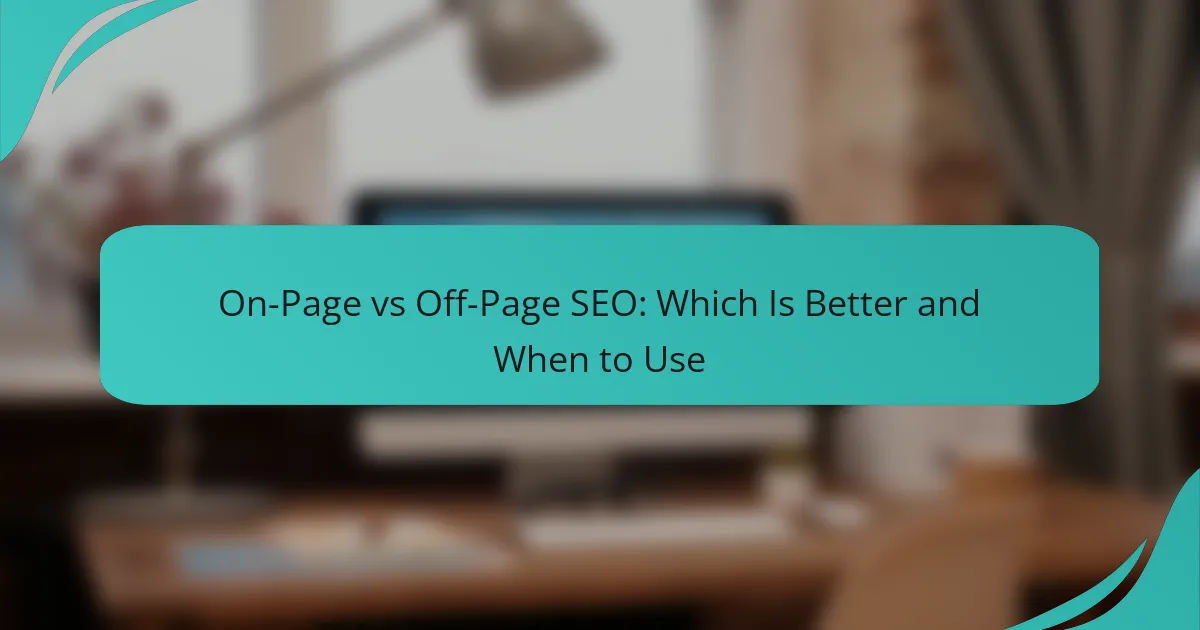SEO plays a crucial role in driving e-commerce sales by improving online visibility and attracting targeted traffic. By implementing effective strategies such as optimizing product listings and enhancing user experience, e-commerce websites can increase customer engagement and conversion rates, ultimately leading to higher sales. A focus on SEO not only boosts traffic growth but also ensures that visitors have a seamless shopping experience, further enhancing the likelihood of conversions.

How does SEO impact e-commerce sales in the UK?
SEO significantly influences e-commerce sales in the UK by enhancing online visibility and attracting targeted traffic. When e-commerce websites rank higher in search engine results, they tend to experience increased customer engagement and sales conversions.
Increased visibility leads to higher sales
Higher visibility in search engine results directly correlates with increased sales for e-commerce businesses. When potential customers can easily find products through organic search, they are more likely to make a purchase. This visibility can be achieved through effective keyword optimization, quality content, and strong backlinks.
For instance, e-commerce sites that appear on the first page of Google can capture a significant share of clicks, often ranging from 30% to 50% of total traffic. This translates to more visitors and, consequently, higher sales figures.
Optimized product pages enhance conversion rates
Optimizing product pages is crucial for improving conversion rates in e-commerce. Well-structured product descriptions, high-quality images, and user-friendly layouts can significantly influence a buyer’s decision. Incorporating relevant keywords naturally into these pages helps in attracting the right audience.
Additionally, including customer reviews and clear calls to action can enhance user trust and encourage purchases. E-commerce sites that focus on these elements often see conversion rates increase by several percentage points, making optimization a key strategy for boosting sales.
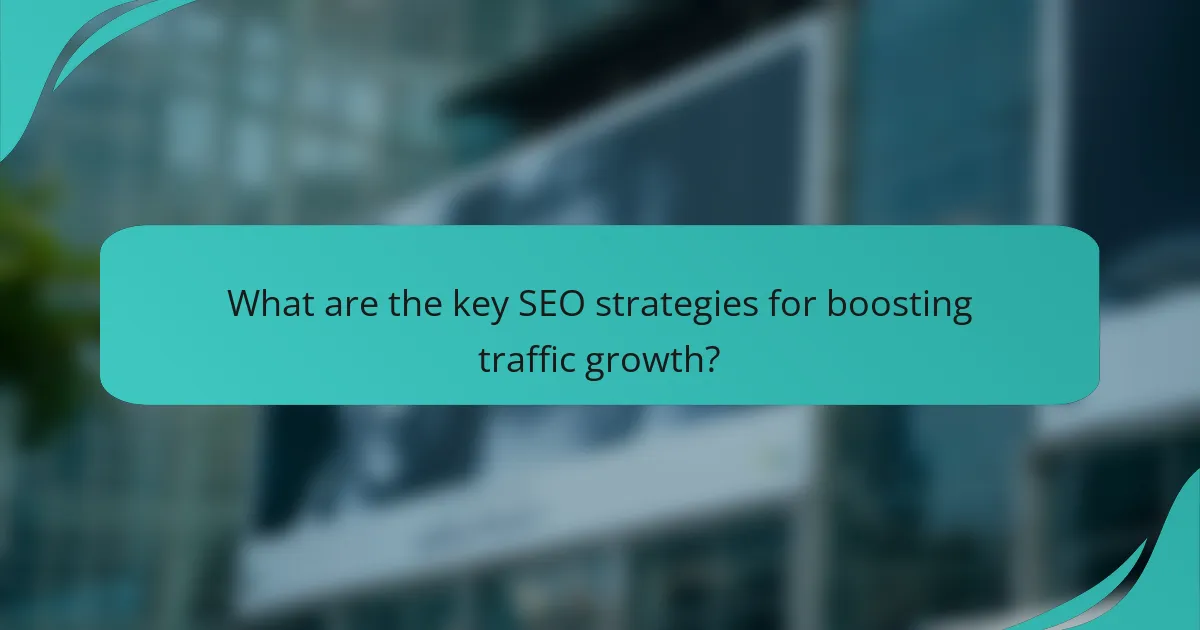
What are the key SEO strategies for boosting traffic growth?
Effective SEO strategies for boosting traffic growth include optimizing product listings, leveraging local SEO, and ensuring a mobile-friendly website. These tactics help improve visibility in search engine results, attract more visitors, and ultimately drive sales.
Keyword optimization for product listings
Keyword optimization involves researching and selecting relevant keywords that potential customers use to find products. Incorporate these keywords naturally into product titles, descriptions, and metadata to enhance search visibility.
Consider using long-tail keywords, which are more specific phrases that often have lower competition and higher conversion rates. For example, instead of just “shoes,” use “men’s running shoes size 10” to target a more defined audience.
Utilizing local SEO for UK customers
Local SEO focuses on optimizing your online presence to attract customers in specific geographic areas, such as the UK. This includes claiming your Google My Business listing, using local keywords, and ensuring your contact information is consistent across all platforms.
Incorporate location-specific terms in your content, such as “buy shoes in London” or “best electronics store in Manchester.” This helps your business appear in local search results, making it easier for nearby customers to find you.
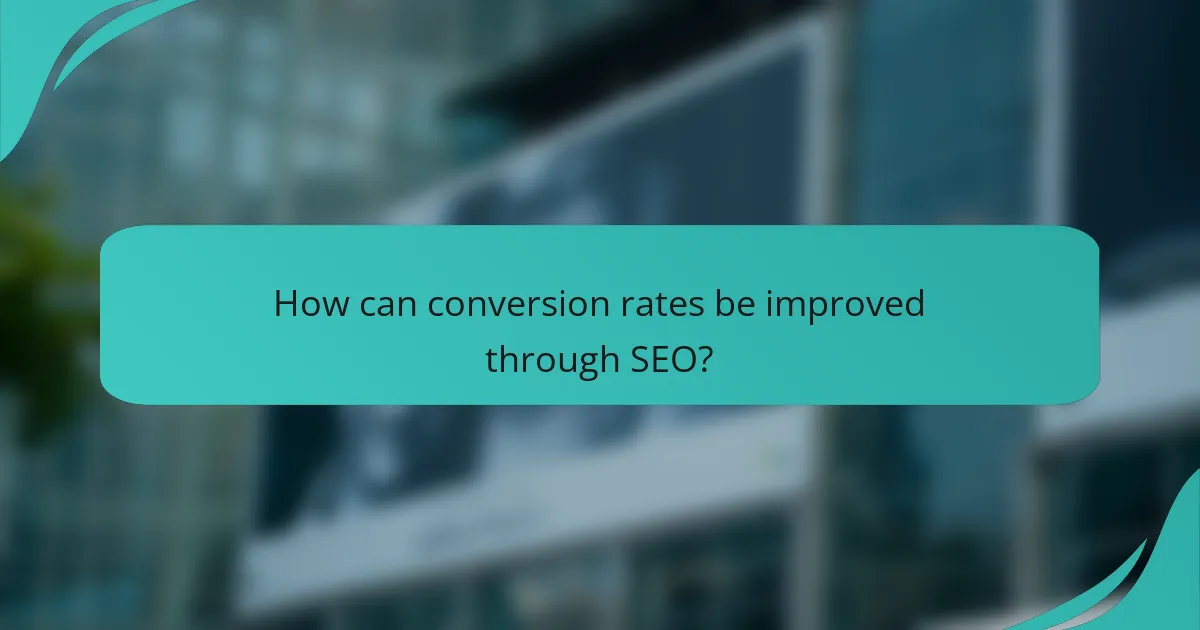
How can conversion rates be improved through SEO?
Conversion rates can be enhanced through effective SEO strategies that focus on optimizing both website visibility and user experience. By improving site speed, user engagement, and utilizing structured data, e-commerce sites can significantly boost their conversion rates.
Improving site speed and user experience
Site speed is crucial for retaining visitors and increasing conversion rates. A faster website reduces bounce rates and encourages users to explore more products. Aim for loading times under three seconds, as studies show that even a one-second delay can lead to a significant drop in conversions.
To enhance user experience, ensure that your website is mobile-friendly and easy to navigate. Use clear calls-to-action and minimize the number of steps required to complete a purchase. Regularly test your site’s performance and gather user feedback to identify areas for improvement.
Implementing structured data for better SERP features
Structured data helps search engines understand your content better, which can lead to enhanced search result features like rich snippets. By implementing schema markup, you can provide additional information about your products, such as prices, availability, and reviews, directly in search results.
Utilizing structured data can improve click-through rates, as users are more likely to engage with listings that provide clear, relevant information. Regularly update your structured data to reflect any changes in your inventory or pricing, ensuring that potential customers receive accurate information.

What metrics should be tracked for SEO success?
To measure SEO success, focus on key metrics such as organic traffic, conversion rates, and user engagement. These indicators provide insights into how well your website is performing in search engines and how effectively it converts visitors into customers.
Organic traffic growth analysis
Organic traffic growth analysis involves tracking the number of visitors arriving at your site through search engine results. Use tools like Google Analytics to monitor changes over time, looking for trends that indicate successful keyword optimization and content strategies.
Consider segmenting your traffic data by source, device, and geographic location to identify which areas are performing best. For instance, if you notice a significant increase in traffic from mobile users in Europe, you may want to optimize your site further for that demographic.
Conversion rate tracking and optimization
Conversion rate tracking measures the percentage of visitors who complete desired actions, such as making a purchase or signing up for a newsletter. Regularly analyze this metric to identify areas for improvement, such as optimizing landing pages or simplifying the checkout process.
To enhance conversion rates, consider A/B testing different elements on your site, such as call-to-action buttons or product descriptions. Aim for a conversion rate of around 2-5% for e-commerce sites, but remember that this can vary widely based on industry and target audience.
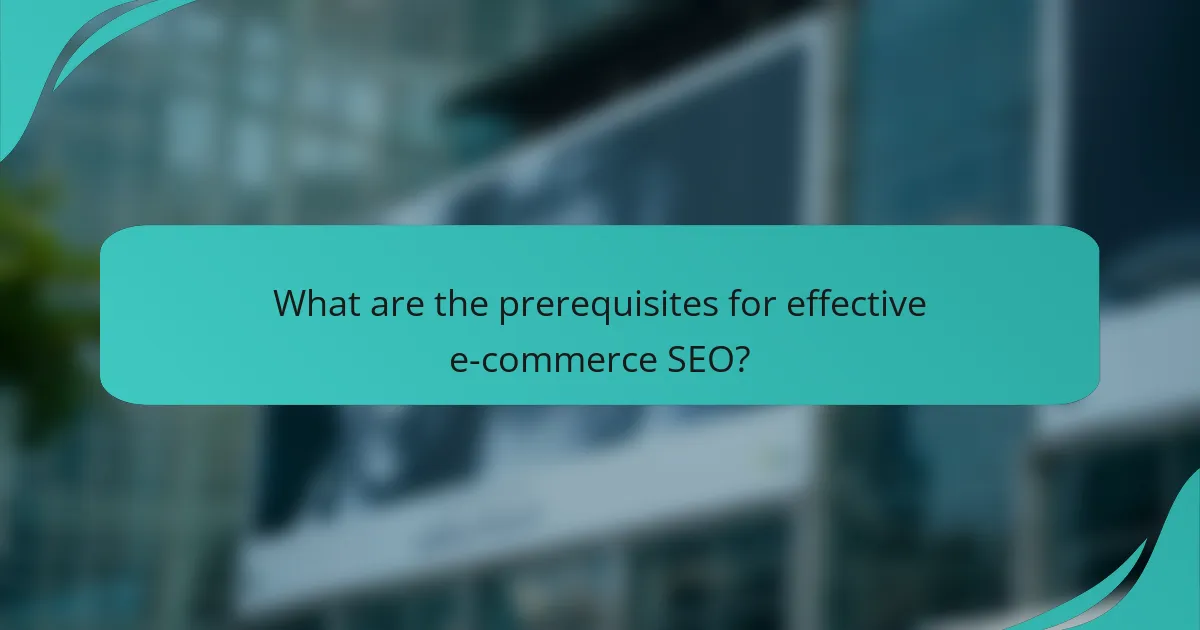
What are the prerequisites for effective e-commerce SEO?
Effective e-commerce SEO requires a solid foundation of technical optimization, quality content, and a clear understanding of the competitive landscape. Key prerequisites include a well-structured website, optimized product pages, and a strategy for ongoing analysis and improvement.
Website audit for technical SEO issues
A comprehensive website audit is essential to identify and resolve technical SEO issues that can hinder e-commerce performance. Focus on aspects like site speed, mobile responsiveness, and crawlability. Tools such as Google Search Console and SEMrush can help pinpoint errors and suggest improvements.
Common technical issues include broken links, duplicate content, and improper use of redirects. Regular audits help maintain site health and enhance user experience, which can lead to higher conversion rates.
Competitor analysis in the UK market
Conducting a competitor analysis in the UK market is crucial for understanding your positioning and identifying opportunities. Start by identifying key competitors and analyzing their SEO strategies, including keyword usage, content quality, and backlink profiles.
Utilize tools like Ahrefs or Moz to gather data on competitors’ organic traffic and top-performing pages. This information can guide your own SEO efforts, helping you to refine your keyword targeting and content strategy to better meet market demands.
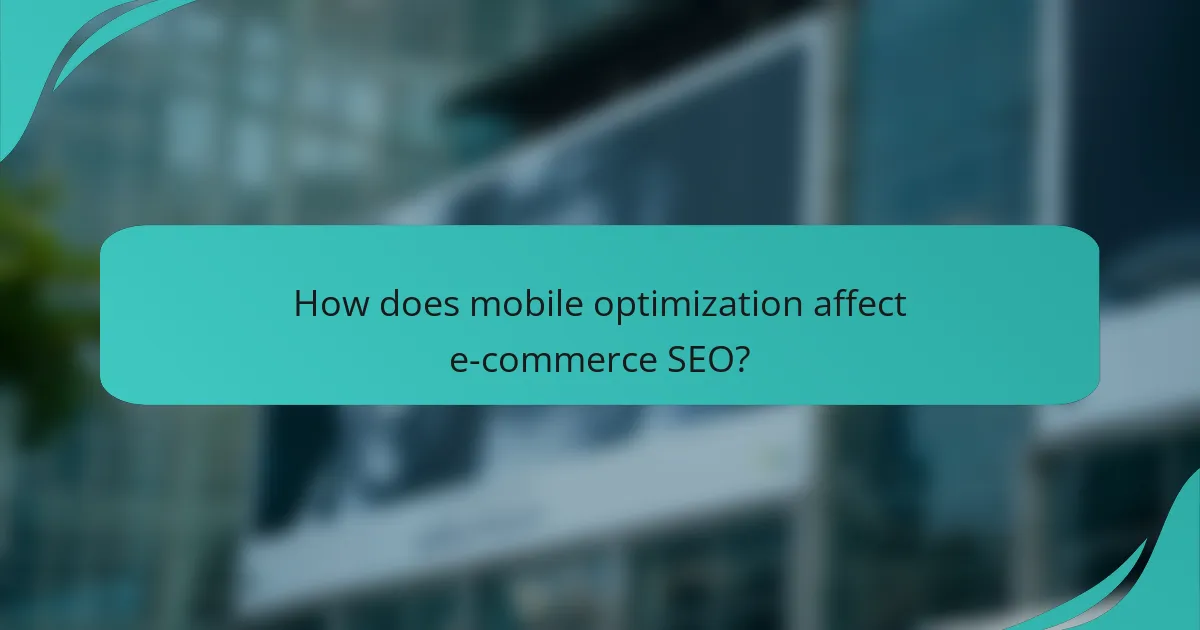
How does mobile optimization affect e-commerce SEO?
Mobile optimization significantly impacts e-commerce SEO by enhancing user experience and improving search engine rankings. A well-optimized mobile site can lead to increased traffic, higher conversion rates, and better overall sales performance.
Mobile-first indexing importance
Mobile-first indexing means that search engines primarily use the mobile version of a website for ranking and indexing. This shift emphasizes the need for e-commerce sites to prioritize mobile optimization, as a poorly optimized mobile site can lead to lower visibility in search results.
To ensure your site is ready for mobile-first indexing, focus on providing the same content and functionality on mobile as on desktop. Regularly test your site’s mobile performance using tools like Google’s Mobile-Friendly Test to identify and fix issues.
Responsive design impact on user engagement
Responsive design adapts your e-commerce site to various screen sizes, improving user engagement by providing a seamless browsing experience. Users are more likely to stay on a site that is easy to navigate on their mobile devices, which can lead to higher conversion rates.
Implementing responsive design can reduce bounce rates and increase time spent on site. Aim for a design that loads quickly and allows for easy access to product information, checkout processes, and customer support, as these factors are crucial for retaining mobile shoppers.

What are the emerging trends in e-commerce SEO?
Emerging trends in e-commerce SEO focus on enhancing user experience and adapting to technological advancements. Key strategies include optimizing for voice search, leveraging artificial intelligence, and prioritizing mobile-first indexing to improve visibility and sales.
Voice search optimization strategies
Voice search optimization is crucial as more consumers use smart speakers and mobile devices for shopping. This trend requires e-commerce sites to adapt their SEO strategies to accommodate natural language queries and conversational phrases.
To optimize for voice search, focus on long-tail keywords and question-based queries that reflect how users speak. For example, instead of targeting “running shoes,” consider phrases like “best running shoes for flat feet.” This approach aligns with the way people verbally ask questions.
Additionally, ensure your website is mobile-friendly and loads quickly, as voice searches often occur on mobile devices. Implement structured data markup to help search engines understand your content better, which can enhance your chances of appearing in voice search results.







